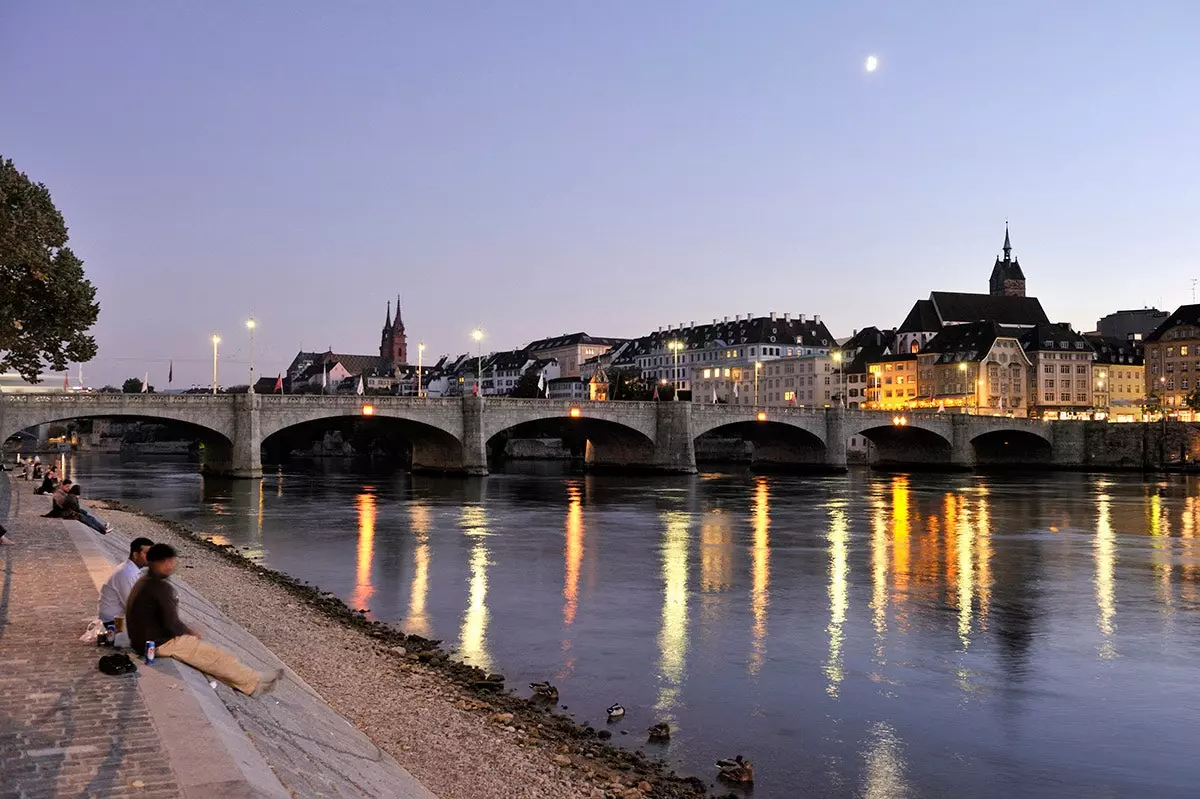
Basel: the Swiss city straddling France and Germany
DAY ONE
09:30. THE TURBULENT CENTER.
Sit on the charming terrace of the Elisabethen cafe-bar I could go through any scene if it weren't because the trays come out of a church . The Elisabethenkirche is a wonderful invention of the confiscations, an establishment with neo-Gothic domes and a certain morning hustle and bustle in which the good little Spanish chapel is scandalized and the less pious, at least, is surprised. This stretches any discouragement at the feeling that Basel is monotonous. And yet, its proximity to other nations and its social heterogeneity They make it more fun than it looks. But let's continue.
In the shadow of sharp pinnacles is the first clash with current art. The theater square is a noisy agora in which passers-by play with Intersection, one of Richard Serra's gigantic sculptures and cool off in the Kinetic and clumsy Tinguely font , assuming that both works of art are part of their daily life and highlighting that good relationship between creativity and the city that happens in every street. The visit to the Historic Center continues strolling down the Rittergasse , home to various mansions built on top of the first chemical companies in the city. Some corporations that were born from the gossip of dyes to turn Basel into the pharmaceutical metropolis par excellence. Quick shows his red cathedral , a solemn building, not too big and whose visit is one more evidence that here the temples have lost in membership and gained in versatility. Here small monographs are exhibited, concerts are offered, the tomb of Erasmus of Rotterdam is boasted and young people sneak into its cloister while they make trouble, hiding from the inquisitive eyes of their teachers. A totum revolutum that ends in the small park behind its apse, from where the Rhine looks like a long lake.
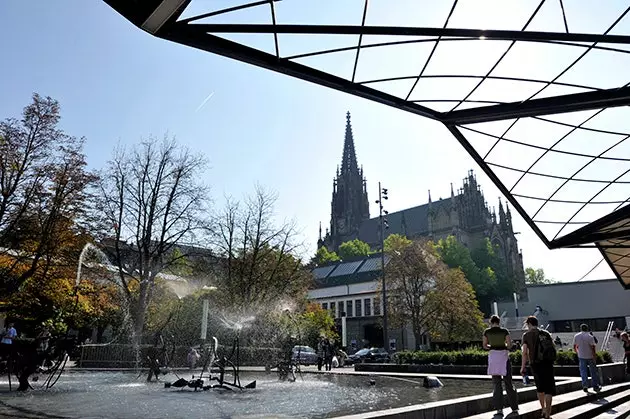
Tinguely's Clumsy Kinetic Fountain
Inertia and routes lead to the City hall , but it's hard not to be tempted to stop at every source. There is practically one on every corner, a symbol of the good sanitation of this neighborhood and also of the creativity of its citizens with small sculptures in each of them. The market square and the local government building have a grand entrance due to their dynamism . Markets of all kinds are organized here every day, showing that, deep down, Basel is a great little town where the surrounding producers are more successful than the superstores. Behind, the imposing facade of the Consistory seems a surrealist work for its color, also reddish, and for its decorative horror vacui , as if its gothic prohibited any space in silence. Its interior supports this kaleidoscopic path while you go up and down the stairs and at the top you can enjoy the defensive traps that, in their day, served to protect the most "sacred" building.
11:30. TONTORRÓN WALK THROUGH SAINT ALBAN.
The Old Quarter has a surprising ace up its sleeve. If you continue along the riverbank, going up the Rhine, you will see Saint Alban neighborhood , the closest thing to that village that came to more than the Middle Ages. Its narrow streets maintain their charm and their large mansions, in addition to keeping intact the small canals that were used to move the waterwheels and irrigate the small orchards. An idyllic neighborhood in which museums play a crucial role. Basel is, with great probability, the city in the world with the most museum spaces per capita, and here they are valued thanks to the branch of the Contemporary Art Museum or the Paper Museum . The Letzi tower and the wall park close this comforting journey through time.
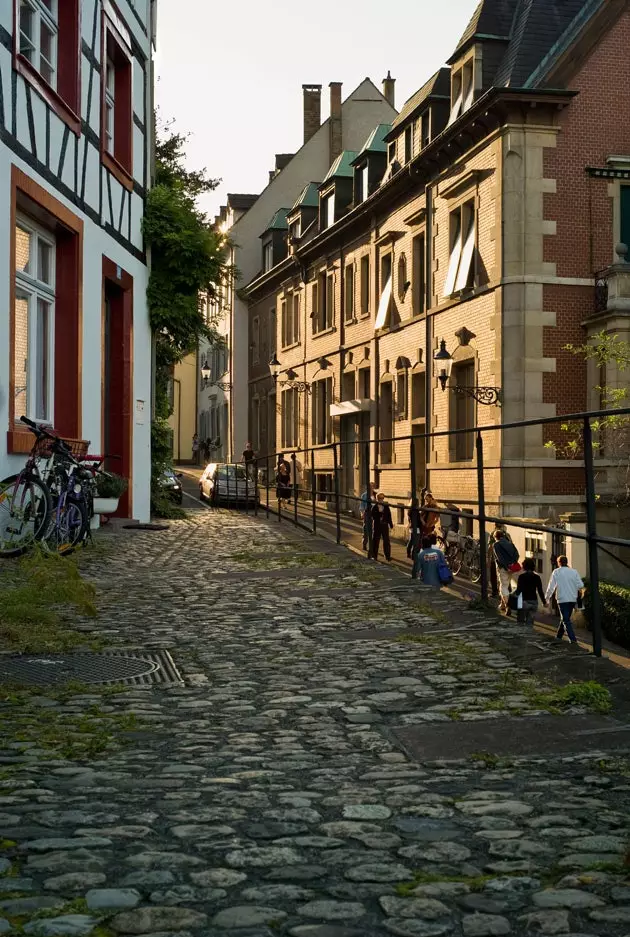
Strolling through Saint Alban
12:30. DISCOVER THE NEW KUNSTMUSEUM .
His long rehabilitation season has allowed cities like Madrid to receive his works. Nevertheless, It is already beautiful, prepared and open for all visitors to enjoy its collections. And it is that the bulk of their works are donations from individuals related to the city, in a financial act (they save on taxes) but also beautiful in which they show a certain altruism and generosity with this institution. Also, has several Picassos, a donation from Pablo himself in recognition of the affection that his neighbors had for him. Not in vain, months before they had demonstrated and had even contributed their own money to prevent The Two Brothers and Seated Harlequin from being sold by their owners and these two works of art from leaving the city.
2:00 p.m. GASTRONOMY BETWEEN INDUSTRIES.
Crossing the Rhine not only has the gift of a beautiful postcard with the stream at the foot of the cathedral. It also means immersing yourself in the other part of the city, a hodgepodge of chic ghettos and fair spaces that has a gastronomic apex. Far from the posture of the Old Town, the confluence of Burgweg and Grezancher streets it is the spitting image of Basel gentrification. In this block, a couple of industrial buildings have been rehabilitated and they have been populated with the good work of three kitchens that are hitting it hard. In Brauerei , the food is noisy and happens between fondues, wine glasses and beer tanks. For its part, Cantina Don Camillo It is the place where the most modern can be seen and where they practice the best terraceo in all of Switzerland . Lastly, in South everything is modern, which is why brunch is practiced almost all day and the days usually end with concerts. Be careful not to get caught.
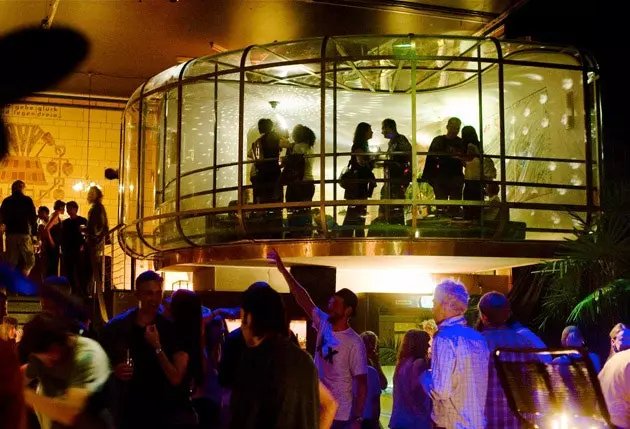
You arrive for brunch and stay until the concert
15:30 THE OTHER SIDE OF THE RIVER.
With a satisfied stomach, start a small safari through this entertaining neighborhood. Its nerve center is the Messe , a place where some of the most powerful fairs in the world are held (such as Art Basel) and which is surprising for being gigantic in a city where everything, absolutely everything, is timid in size. The giant chess and the sovereign Messe Turm guide the steps. Another essential point in this foray is the badischer-station , one of the three that the city has and that was once destined for the lines that departed or came from Germany. It is the oldest of the three and the most sculptural, which does not mean that fast food and the frenzy of punctuality rule everything.
On this side, the Rhine offers beaches for the most daring, docks for small river cruises that even reach the idyllic Shaffhausen village and a very pleasant riverside that culminates in the solitude park , an English garden with modern statues in which there is the Tinguely Museum , a space dedicated to this sculptor in which to enjoy his crazy creations and his reflections on consumer society.
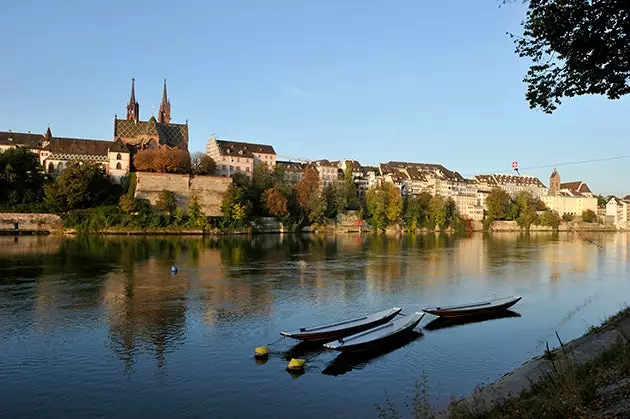
Life happens in Basel on the banks of the Rhine
8:00 p.m. FRESH DINNER.
If the weather is good, Basel is a city that loves to dine alfresco , although its restaurants always keep large interior rooms. Hence, the plan works for any time of the year. Two proposals center the night here. The first is the most sophisticated. In Le Cheval Blanc you enjoy the luxurious life of the guests you frequent Le Trois Rois and that they do not deprive themselves of a dinner orchestrated by Peter Knogl . In his creations he demonstrates the reason for the three Michelin stars awarded to the establishment and that they are a mix of French haute cuisine with influences from around the world. A bit like the city.
For its part, Water it is more rogue and boisterous. Located in a mansion that borders the city zoo, this space is perfect for exhibiting, dine on some Italian topics and indulge in revelry . A rather amazing metamorphosis in which you go from Sicily to New York almost without blinking an eye.
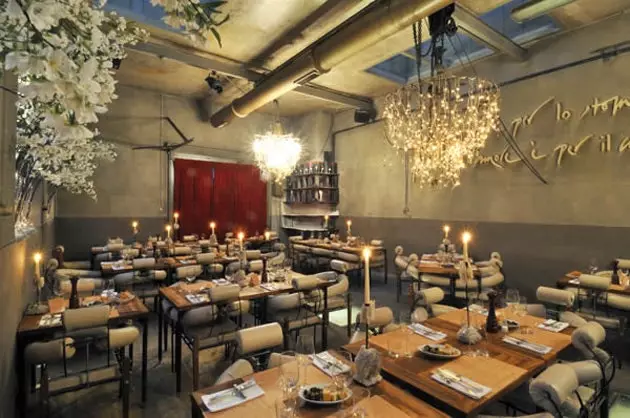
Acqua, the rogue touch
DAY TWO
10:00. TRAVELERS TO THE TRAM.
Although it has not been named yet, this means of transport is the star of the city. Above all number 11 for assuming a different journey through some of the most outstanding buildings in the city. Yes, it is a total freak, but the journey is calm and stimulating. At one point is Schauger , a hybrid of museum and warehouse in which the collection of the Emmanuel Hoffmann Foundation, but where research is also carried out to conserve art and congresses and other activities are held. And all this with the incentive of being inside a large architectural box in the purest brutalist style work of local geniuses Herzog & de Meuron . The next stop leads to the railway control, a tower also created by these architects, and to the university buildings, where bike lanes and tracks run through their bowels.
The station of France and Switzerland and its modern facilities are the stars of the next stage, while the center of the city slides behind glass with the occasional icon such as the headquarters of the Bank for International Transactions, designed by Mario Botta . At its end, the Campus Novartis stands as the ultimate research and industrial complex. Although it is a closed area, offers guided tours in which it is discovered how great studios and architects such as SANAA, Moneo, Gehry or Chipperfield propose constructive solutions to the challenges of this great pharmaceutical company.
12:30. WELCOME TO THE MOST BUCOLIC MUSEUM IN THE WORLD.
Other trams, in this case the numbers 1, 2, 6 or 14, are the ones that drive from the city center to the idyllic little town of Riehen . here the Beyeler Foundation it's everything. Created thanks to the funds of this great collector, this museum takes the Oscar for beauty thanks to a venue designed by Renzo Piano in which works of art merge with nature. The tour of its rooms, in addition to promoting dialogues between the landscape and the paintings and sculptures, allows to traverse the art from the avant-garde and also enjoy some Temporary exhibitions that are at the height of any 'Great' of New York or Paris. In addition, in a chalet within the small park that leads to the foundation, there is a charming restaurant where you can stock up before continuing with the journey through the outskirts.
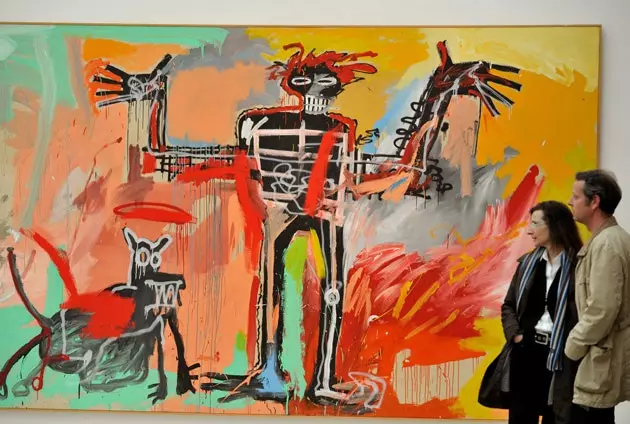
Art and space at the Beyeler Foundation
3:00 p.m. THE PARADISE ‘VITRA’.
Although it is on German soil, the fact of being a Swiss company and being close to Basel means that the Vitra Campus can be considered as Helvetic soil. So far you have to go on a pilgrimage to nothing so that your concern for design transcends the Ikea catalogue. because here it is the largest architecture and creativity theme park on the planet. In a long esplanade you can enjoy of the first deconstructivist Gehry and the first great museum , from Tadao Ando's concept of silence and space, from Siza's love for brick and even from the first great work of Zaha Hadid . And at the end of the tour, by way of total ecstasy, the VitraHaus by Herzog & de Meuron puts the climax as a great store in which each window and each corner looks like a museum in which everything, absolutely everything, can be bought.
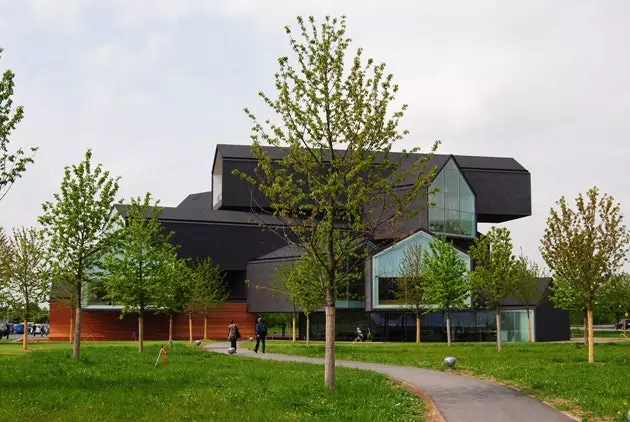
The store
